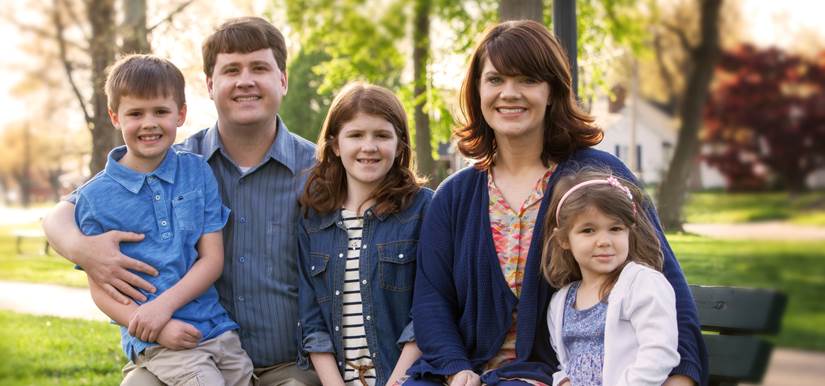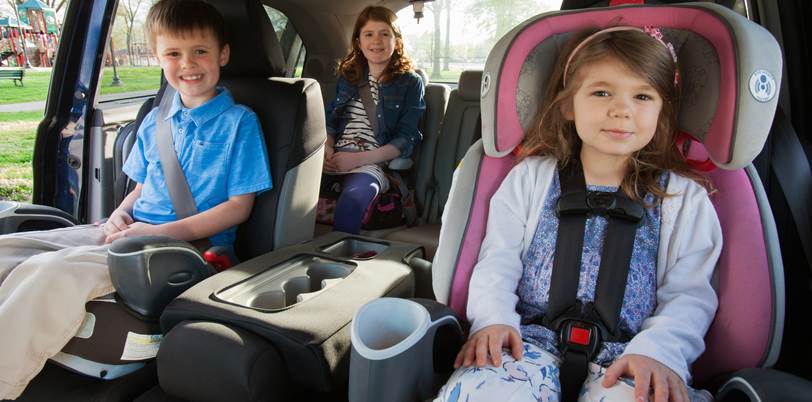Car Seat Safety

Author: John Phillips, MD
There are no shortcuts to safety when you’re on the road with your children. As a pediatrician and a parent myself, I find it’s always a challenge to keep my kids from getting bumps and bruises. Short of completely swaddling my children in bubble wrap – which isn’t exactly a reasonable option – there’s no way to completely protect them from the occasional minor “owwie.”
When it comes to traveling in the family vehicle with children, I advise parents to never take any chances. Properly restraining children, whether it’s with a car seat, booster seat or in a seat belt, can be life-saving in the event of a car accident.
Sign Up for a Class
Register for the Virtual Car Seat Safety Class
Would you like to have your car seats checked?
Request a Car Seat Safety Check
Exercising Restraint
This is an issue that is near and dear to my heart, especially because I see it is such a problem in this area. On a daily basis, I see far too many children who are not secured or improperly restrained while riding in a car. It is no exaggeration to say that most days, I could stand at the curb at any school in town and find children either roaming free or riding dangerously in vehicles.
This is not an isolated problem. According to the American Academy of Pediatrics, motor vehicle crashes are the leading cause of death for children above the age of 4. In 2013, the Centers for Disease Control and Prevention found that 638 children under age 12 died in car crashes, and about 40 percent of them weren’t secured. Children injured in crashes numbered more than 127,250.
Many of these are children injured or killed needlessly because in the vast majority of these cases their lives would have been saved if they were properly secured. We’ve all heard about how seat belts save lives, and car seats and booster seats are equally as important. Depending on a child’s weight, height and age, the means for safely securing them in a vehicle change. Failing to use the right method or the right seat can lead to serious injury and even death for a child, even in minor crashes.
Sizing Up The Situation
Choosing the correct restraint option for your child depends entirely on their height, weight, age or a combination of these. Here are the guidelines to follow:
- Rear-facing until age 2. It wasn’t long ago that we turned children around when they turned 1 year old, but evidence shows that their bodies are too small to handle the impact of a collision in a forward-facing seat. They should be restrained in a rear-facing infant seat until they outgrow it for weight and length. At that time they should be placed in a rear-facing convertible seat until at least age 2, but
ideally until they reach the maximum height and weight limit allowed by the seat. Rear-facing seats provide support to a child’s head and neck. This prevents potentially severe head, neck and spinal cord injuries that can occur if faced forward too soon.
- At age 4, high-back booster seats can be considered, but newer evidence shows it is safest to remain in a five-point harness seat as long as possible. That’s why many newer forward-facing car seats have higher weight and height limits, allowing the child to remain in a harness longer. Both of my older kids were 6 years old before we moved them from the five-point harness to the high-back booster seats using only the seat belt.
- After your child has outgrown their five-point car seat, switch to a high-back booster seat. These seats help guide the seat belt into the correct position across a child’s shoulder (instead of across their
neck ) to prevent serious internal injury. Use a high-back booster seat as long as the child’s shoulder is below the shoulder belt path. Once the shoulder is above the opening for the seat belt, the back should be taken off and only the booster seat portion should be used. Children should remain in a booster seat until they reach 57 inches in height (4’ 9”), which is the law in Kentucky.
- Once the child is 4’9” tall, a seat belt without a booster seat can be worn properly. Any child under the age of 13 should always ride in the back seat to prevent injury from
air bags in the front seat.
Safe Passage

It’s not just important to use the proper car or booster seat, but also to make sure you’re using them correctly. Failing to install or use a car seat properly may mean your child isn’t protected in case of a crash.
Here are additional guidelines for proper usage of restraint seats and seat belts:
- When you install a car or booster seat, make sure to properly secure it using the seat belt or your vehicle’s LATCH system (LATCH stands for Lower Anchors and Tethers for Children, a system mandated by the federal government in an effort to standardize and simplify the installation of child restraints). When a car seat is properly installed using either of these systems, it should not move more than one inch in any direction.
- To do a seat belt installation, pull the seat belt all the way out and then let it retract so the belt locks into place. You will hear a clicking noise and the seat belt will not be able to be pulled out any further.
- Nearly all new vehicles and child safety seats manufactured after 2002 will be equipped with the LATCH system. Anchor points are located between the vehicle's seat cushion and the
seat back in at least two rear seating positions. Child safety seats have tether straps or rigid connectors that hook into these anchors, eliminating the need to secure the child safety seat to the vehicle using the seat belt. - Harness strap placement through the back of the car seat is key. In rear-facing seats, the straps should be at or below the child’s shoulders in the upper slots. In front-facing seats, the straps should be at or above the child’s shoulders in the upper slots.
- The harness clip should always be at armpit level and the harness should be snug. No more than one finger should fit between the harness and your child’s shoulder. Any extra slack in the straps could allow the child to be ejected from the seat in a crash.
- Children should always ride in the back of a vehicle until at least age 13 because of
risk of injury if the airbags are deployed. - Seat belts should never be worn any way except with the belt across the shoulder. Placing the belt under the arm can cause severe injuries to the chest or abdomen. Placing the shoulder strap behind the rider can cause severe injuries to the abdomen or pelvis.
- Car seats have a lifespan. Never use a car seat that is older than six years or that has already been through a car crash. The materials in the car seat deteriorate over time. Any type of impact can also cause stress fractures in the plastic than can prevent the seat from protecting your child in a future accident. Avoid buying used car seats unless you know the seat’s history or previous owner. If you’re in a crash with a car seat, check with your insurance company before buying a new one. They may cover part or all of the cost.
Being Resourceful
There are a number of very helpful resources available when it comes to installing or using a car or booster
Get Assistance
If you need expert assistance in installing or checking a car seat’s
- Daviess County Sheriff’s Office - 270-685-8444
- Owensboro Police Department - 270-687-8888
- Trooper Corey King, Kentucky State Police Post 16 - 270-577-1567